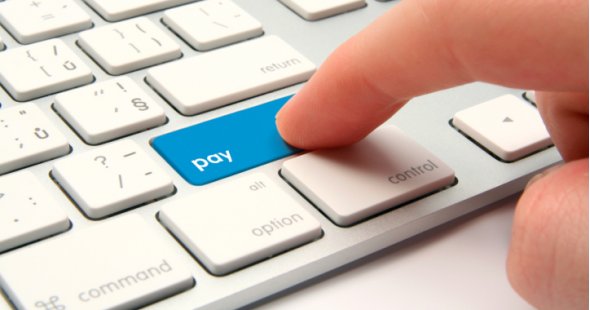Accounting
Leveraging Supplier Payment Networks for ePayments
The hardest problem in B2B payments isn’t moving the money. It’s simple enough to get payment to suppliers electronically through a credit card or ACH network. What’s hard is vendor enablement—knowing which suppliers accept what payment type, and ...
Sep. 18, 2017

The hardest problem in B2B payments isn’t moving the money. It’s simple enough to get payment to suppliers electronically through a credit card or ACH network. What’s hard is vendor enablement—knowing which suppliers accept what payment type, and keeping track of it all.
With thousands of suppliers, this daunting task requires accounts payable to assume the liability of sensitive supplier banking information. A lot of companies don’t go electronic because they think, “Geez, I’d have to reach out to all of my suppliers to collect payment information. It’s a full-time job just to do that.”
This is a big reason why U.S. businesses still make 51 percent of their supplier payments by paper check. Almost every supplier accepts checks, and the only information the buyer needs is the supplier’s address, which they probably have on file.
A huge piece
Payment providers haven’t done this. ACH or card payments through a bank or technology provider typically take supplier lists and reach out to the top 10 or 20 percent with the most spend. But that’s where it stops. They leave out a majority of other suppliers who would happily accept an electronic payment or card. The customer’s AP department then shoulders the burden of managing this supplier data.
A few times a year, a payments provider might reach out to update this information, but without an ongoing supplier enablement program, it’s a futile effort to stay current.
In Nvoicepay’s payment network, an average of 11 percent of supplier payment information changes month over month. Suppliers don’t always call when their information changes: one of the primary reason payments fail.
Since each of these products are sold separately within the bank, one arm of the bank might be enabling a supplier just for ACH, while another is enabling that same supplier just for card payments. The bank doesn’t own these networks, so there is no comprehensive view of every supplier’s payment information. There’s no easy way for the customer to prioritize supplier payment types.
Few companies make it beyond making 20 percent ePayments because it would require an enormous enablement effort.
A scalable effort
Supplier enablement is a huge part of helping any company make 100 percent of their payments electronically. A cloud network of payment-enabled suppliers eliminates massive amounts of repetitive, manual effort.
It allows shared visibility of card-enabled suppliers on the network. This cloud-enabled supplier data allows thousands of customers using the same information to pay that supplier.
Solutions like Nvoicepay enroll 100 percent of new customers in the network. Nvoicepay gives customers the green light to pay any supplier electronically from its hundreds of thousands of suppliers.
For those not enabled for ACH or card, a good payments provider will outreach to capture that information on the customer’s behalf. Leveraging these network effects means that every addition to the network creates shared value.
The built-in security controls around this process prevent accounts payable staff from setting up a new supplier on Nvoicepay’s payment network. This keeps payments to fraudulently-created suppliers at bay.
Continual enablement
Virtual card payments take priority in the enablement process. For suppliers unwilling to accept a card payment for an invoice, they default to ACH in the Nvoicepay network. ACH is still more cost effective, secure and efficient than writing a check.
For customers making a high percentage of check payments, outreach continues to their suppliers to encourage adoption of electronic payment options. This continual vendor enablement gathers and updates payment information in real time.
So if a supplier in the Nvoicepay network receiving ACH decides to accept credit cards tomorrow, Nvoicepay’s technology will default to the preferred method of payment for the customer (virtual card) and all customers who pay that supplier.
Since paying by check costs companies on average six times the amount an ACH does, customers can immediately cut costs just by paying more suppliers electronically. Nvoicepay estimates nearly 75 percent of suppliers will accept some form of ePayment (virtual card or ACH).
Continual supplier enablement is the secret to a successful electronic payments program. Suppliers aren’t going to call about changing bank accounts or payment types. And there’s no liability of storing somebody else’s banking information with a payments solution provider managing the data.
————
Sue Ellen is the Vice President of Sales, West Region at Nvoicepay. She is a payment industry expert who has more than seven years of experience in delivering scalable payment solutions.
